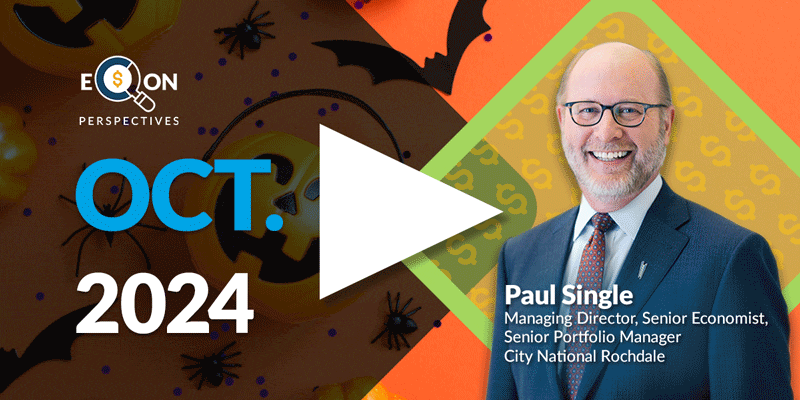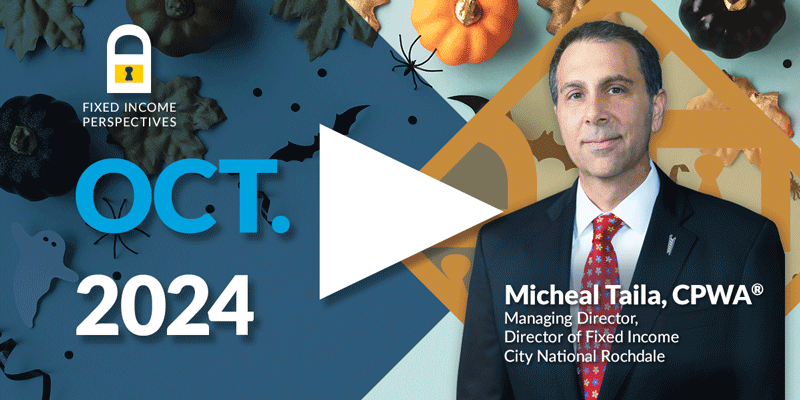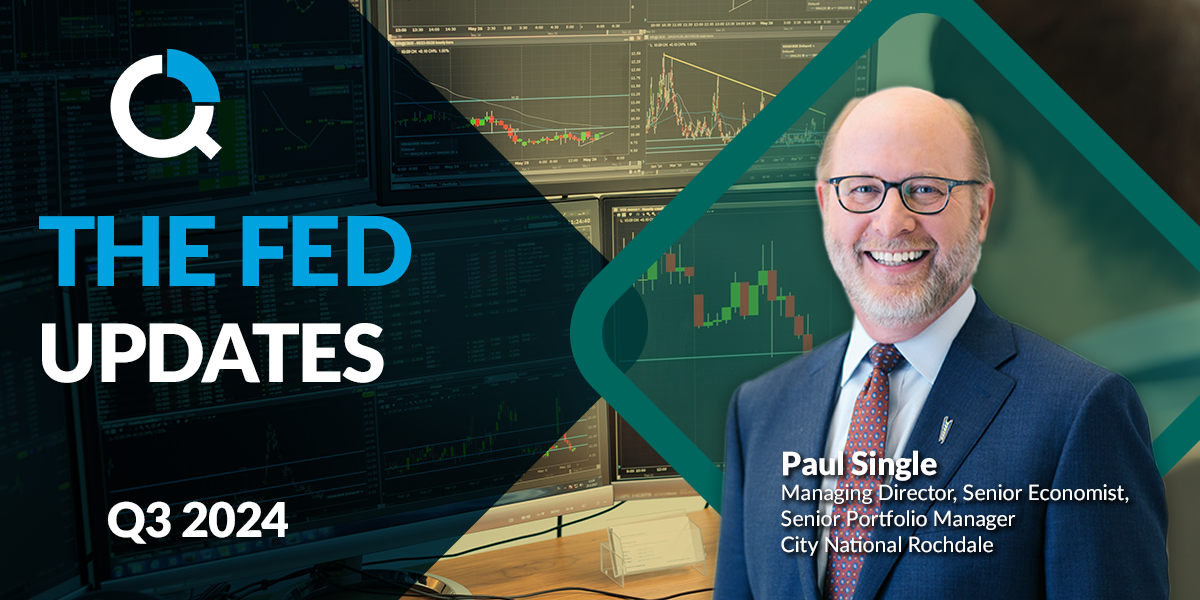

FAQs on the Markets and Economy
What did Fed chair Powell say at the annual economic symposium held at Jackson Hole, Wyoming?
Powell’s speech was short (about eight minutes long) and he did what he needed to do; Powell made sure the whole world knew that the Fed was focused on reducing inflation to the target rate of 2.0%.
Doing so will take time, the pace of economic growth may slow, and the unemployment rate may rise due to the Fed’s actions. Nevertheless, he emphasized that the Fed will successfully bring inflation back under control. He made no nuanced statement that could be interpreted as dovish. As a result, Wall Street firms are now touting the mantra “higher for longer.”
There were four key points that he delivered.
- The Fed has a solid commitment to restoring price stability.
- To achieve that goal, the Fed will have to move short-term interest rates into restrictive territory.
- The pace of interest rate hikes will slow sometime, someday.
- The Fed has no plans to pivot toward interest rate cuts.

What does the strong labor market mean for the Fed?
It makes it very difficult for the Fed. This is a story of good news being bad news.
The good news is that the labor market is very strong — something every central banker wants. The bad news is that with inflation so high, the Fed’s job of fighting inflation has gotten harder. Just as Powell said at the Fed’s Economic Symposium in Jackson Hole, the labor market maintains impressive momentum. There is an imbalance between labor demand and labor supply, which is keeping wages high. This is a concern for the Fed since higher wages lead to higher inflation.
The demand for workers is so strong that there are now two jobs available for each person looking for a job, which compares to the long-term average of 0.6 jobs available for every job-looker (chart). This means the Fed will have to keep upward pressure on interest rates to help lower the demand for goods and services, which in turn lowers the demand for workers, which will lower the rapid wage-price appreciation.

What have we learned from the Q2 earnings season?
With nearly all companies now reported, Q2 S&P 500 earnings grew by 8.9% from a year ago, led by strong growth from the energy sector.
Overall, the results highlight some resiliency to corporate profit conditions driven by continued strong pricing power and the relatively solid financial position of households.
However, companies are not immune to increasing economic challenges and a more cautious forward guidance is emerging. Although revenue growth has stayed strong, helped by high inflation, companies have been citing a growing number of headwinds including rising wages, higher commodity and input costs, a stronger dollar and softer demand that could lead to earnings disappoints ahead. Margins in particular have plenty of scopes to fall from near record-high levels.
In market downturns, the initial phase of the decline has typically been driven by a drop in valuations, which is then followed but a lowering of analyst estimates for earnings. While valuations adjusted over the first half of the year, the earnings adjustment process has only just begun and we think that expectations remain too optimistic given elevated uncertainty around the outlook and rising recession risk.
For investors, this means it remains too early to signal the all-clear sign and that further downside is possible in the coming months before equity markets find a durable bottom.

Should you be concerned about your high-yield bond portfolio?
The U.S. corporate bond market has not escaped the broader bond sell-off, especially as concerns over the potential decline in growth in addition to geopolitical factors have led to concern over risk in the asset class.
However, hand-wringing over the sector’s credit outlook may be overdone. The trailing 12-month default rate for high-yield or “junk” debt is only 1.3%, nearly 3.5% below the average since 1996 and 7.3% below the pandemic peak.1 Only eight companies out of more than 300 issuers have defaulted in 2022.2 Further, over the past 12 months, for every one downgrade, there have been two upgrades, reflecting increasing quality in the market.3
Another factor driving the market is the contraction of available supply. By 2022, the high-yield market has shrunk by a record $124B.4 It seems strange that the market is shrinking at the same time credit quality is rising, but, after the robust issuance in 2020 and 2021, debt maturities have been extended and balance sheets are already flush with cash at historically low fixed interest rates. 2020 issuance increased 44% over 2019 and 2021 issuance increased 17% over 2020 for a total combined issuance of nearly $1T post-pandemic.5 There simply isn’t a need for corporations to come to market in a rising rate environment and the record-setting amount of issuance created a runway for corporations to survive a shallow economic downturn.
Combine the positive credit trends and reduced issuance with yields approaching 9% and the return versus risk comparison becomes attractive for the long-term investor, even if volatility continues.6

Important Disclosures
1Moody’s Investors Service July 2022 Default Report
2Moody’s Investors Service July 2022 Default Report
3Moody’s Investors Service July Default Report
4J.P. Morgan Credit Strategy Weekly Update, August 26, 2022
5Bloomberg U.S. High Yield Corporate Debt League Tables
6Bloomberg U.S. High Yield Index
The information presented does not involve the rendering of personalized investment, financial, legal or tax advice. This presentation is not an offer to buy or sell, or a solicitation of any offer to buy or sell, any of the securities mentioned herein.
Certain statements contained herein may constitute projections, forecasts and other forward-looking statements, which do not reflect actual results and are based primarily upon a hypothetical set of assumptions applied to certain historical financial infor-mation. Certain information has been provided by third-party sources, and although believed to be reliable, it has not been inde-pendently verified, and its accuracy or completeness cannot be guaranteed.
Any opinions, projections, forecasts and forward-looking statements presented herein are valid as of the date of this document and are subject to change.
There are inherent risks with equity investing. These include, but are not limited to, stock market, manager or investment style risks. Stock markets tend to move in cycles, with periods of rising prices and periods of falling prices.
Investing in international markets carries risks such as currency fluctuation, regulatory risks and economic and political instability.
There are inherent risks with fixed income investing. These may include, but are not limited to, interest rate, call, credit, market, inflation, government policy, liquidity or junk bond risks. When interest rates rise, bond prices fall. This risk is heightened with in-vestments in longer-duration fixed income securities and during periods when prevailing interest rates are low or negative.
Investing involves risk, including the loss of principal.
As with any investment strategy, there is no guarantee that investment objectives will be met, and investors may lose money.
Past performance is no guarantee of future performance.
This material is available to advisory and sub-advised clients, as well as financial professionals working with City National Rochdale, a registered investment advisor and a wholly-owned subsidiary of City National Bank. City National Bank provides investment management services through its sub-advisory relationship with City National Rochdale.
Non Deposit Investment Products are: Not FDIC Insured, Not Bank Guaranteed, May Lose Value
The information presented does not involve the rendering of personalized investment, financial, legal, or tax advice. This presentation is not an offer to buy or sell, or a solicitation of any offer to buy or sell any of the securities mentioned herein.
Certain statements contained herein may constitute projections, forecasts and other forward-looking statements, which do not reflect actual results and are based primarily upon a hypothetical set of assumptions applied to certain historical financial information. Readers are cautioned that such forward-looking statements are not a guarantee of future results, involve risks and uncertainties, and actual results may differ materially from those statement. Certain information has been provided by third-party sources and, although believed to be reliable, it has not been independently verified and its accuracy or completeness cannot be guaranteed.
Past performance or performance based upon assumptions is no guarantee of future results.
Indices are unmanaged and one cannot invest directly in an index. Index returns do not reflect a deduction for fees or expenses.
Any opinions, projections, forecasts, and forward-looking statements presented herein are valid as on the date of this document and are subject to change.
All investing is subject to risk, including the possible loss of the money you invest. As with any investment strategy, there is no guarantee that investment objectives will be met and investors may lose money. Diversification does not ensure a profit or protect against a loss in a declining market. Past performance is no guarantee of future performance.
This material is available to advisory and sub-advised clients, as well as financial professionals working with City National Rochdale, a registered investment adviser and a wholly-owned subsidiary of City National Bank. City National Bank provides investment management services through its sub-advisory relationship with City National Rochdale.
INDEX DEFINITIONS
S&P 500 Index: The S&P 500 Index, or Standard & Poor’s 500 Index, is a market-capitalization-weighted index of 500 leading pub-licly traded companies in the U.S. It is not an exact list of the top 500 U.S. companies by market cap because there are other criteria that the index includes.
Muni Bond: A municipal bond is a debt security issued by a state, municipality or county to finance its capital expenditures, including the construction of highways, bridges or schools. These bonds can be thought of as loans that investors make to local govern-ments.
Bloomberg Barclays U.S. Corporate High Yield Bond Index: measures the USD denominated, high-yield, fixed-rate corporate bond market.
Dow Jones Select Dividend Index: The Dow Jones U.S. Select Dividend Index looks to target 100 dividend-paying stocks screened for factors that include the dividend growth rate, the dividend payout ratio and the trading volume. The components are then weighted by the dividend yield.
CBO: A collateralized bond obligation (CBO) is a type of structured debt security that has investment-grade bonds as the underlying assets backed by the receivables on high-yield or junk bonds.
Moody’s: Moody’s Corporation (MCO) is the holding company that owns both Moody’s Investors Service, which rates fixed income debt securities, and Moody’s Analytics, which provides software and research for economic analysis and risk management. Moody’s assigns ratings on the basis of assessed risk and the borrower’s ability to make interest payments, and its ratings are closely watched by many investors.
Penn Wharton Budget Model: Penn Wharton Budget Model’s (PWBM) tax policy simulator allows policymakers, members of the media, and the general public (“users”) to see the impact that potential reforms to tax policy will have on many the economy and the federal budget.
NDMC: National Drought Mitigation Center (NDMC) The National Drought Mitigation Center’s mission is to reduce the effects of drought on people, the environment and the economy by researching the science of drought monitoring and the practice of drought planning.
NOAA: The National Oceanic and Atmospheric Administration (NOAA) is an American scientific and regulatory agency within the United States Department of Commerce that forecasts weather, monitors oceanic and atmospheric conditions, charts the seas, conducts deep sea exploration, and manages fishing and protection of marine mammals and endangered species in the U.S. exclusive economic zone.
USDA: The United States Department of Agriculture (USDA) is the federal executive department responsible for developing and executing federal laws related to farming, forestry, rural economic development, and food.
The SIFMA Municipal Swap Index: The Securities Industry and Financial Markets Association Municipal Swap Index is a 7-day high-grade market index comprised of tax-exempt Variable Rate Demand Obli-gations (VRDOs) with certain characteristics. The Index is calculated and published by Bloomberg. The Index is overseen by SIFMA’s Municipal Swap Index Committee.
CalPERS: The California Public Employees’ Retirement System, also known as CalPERS, is an organization that provides numerous benefits to its 2 million members, of which 38% are school members, 31% public agency members, and 31% state members.
4Ps: The 4P analysis is a proprietary framework for global equity allocation. Country rankings are derived from a subjective metrics system that combines the economic data for such countries with other factors including fiscal policies, demographics, innovative growth and corporate growth. These rankings are subjective and may be derived from data that contain inherent limitations.
Stay Informed.
Get our Insights delivered straight to your inbox.
Put our insights to work for you.
If you have a client with more than $1 million in investable assets and want to find out about the benefits of our intelligently personalized portfolio management, speak with an investment consultant near you today.
If you’re a high-net-worth client who's interested in adding an experienced investment manager to your financial team, learn more about working with us here


